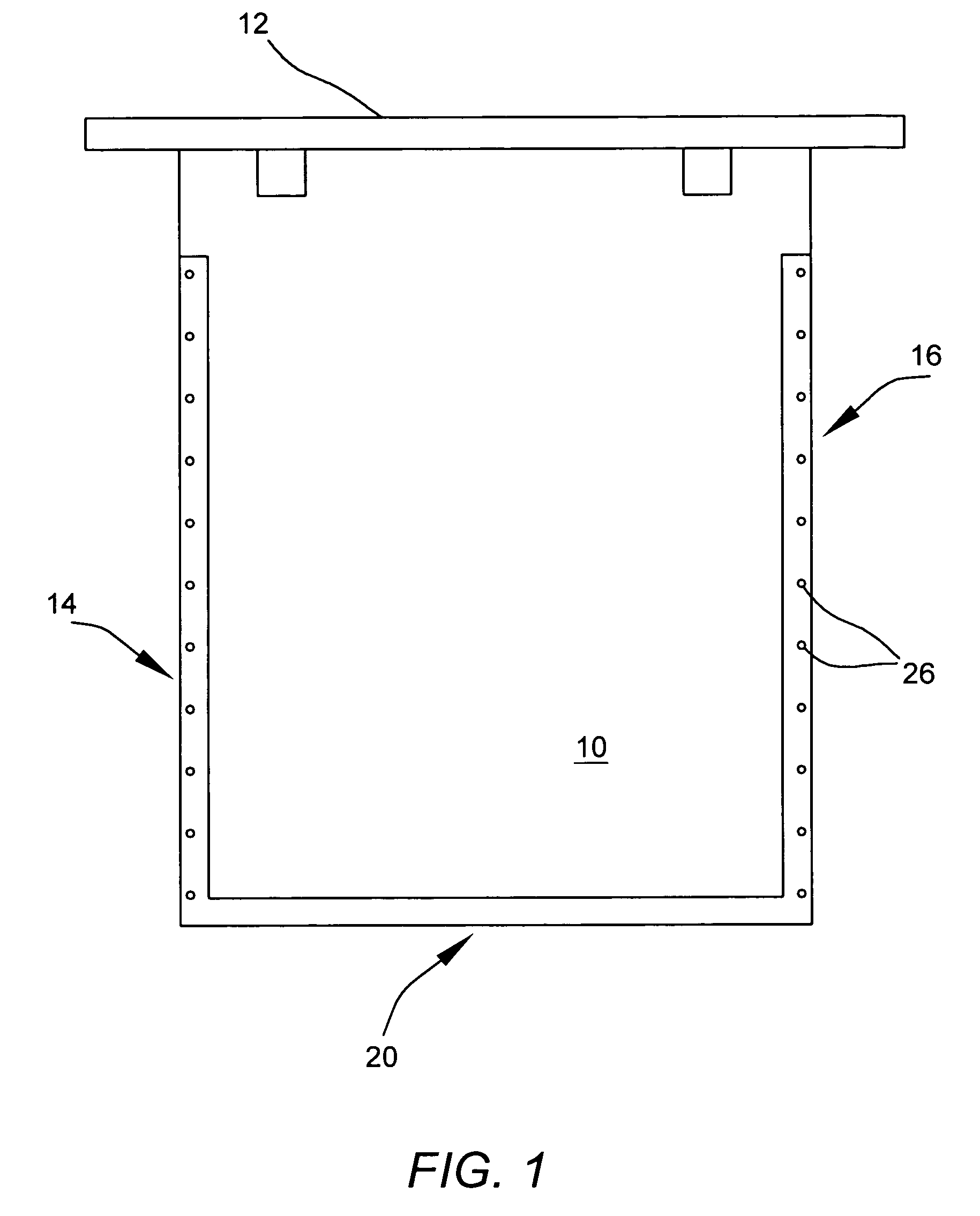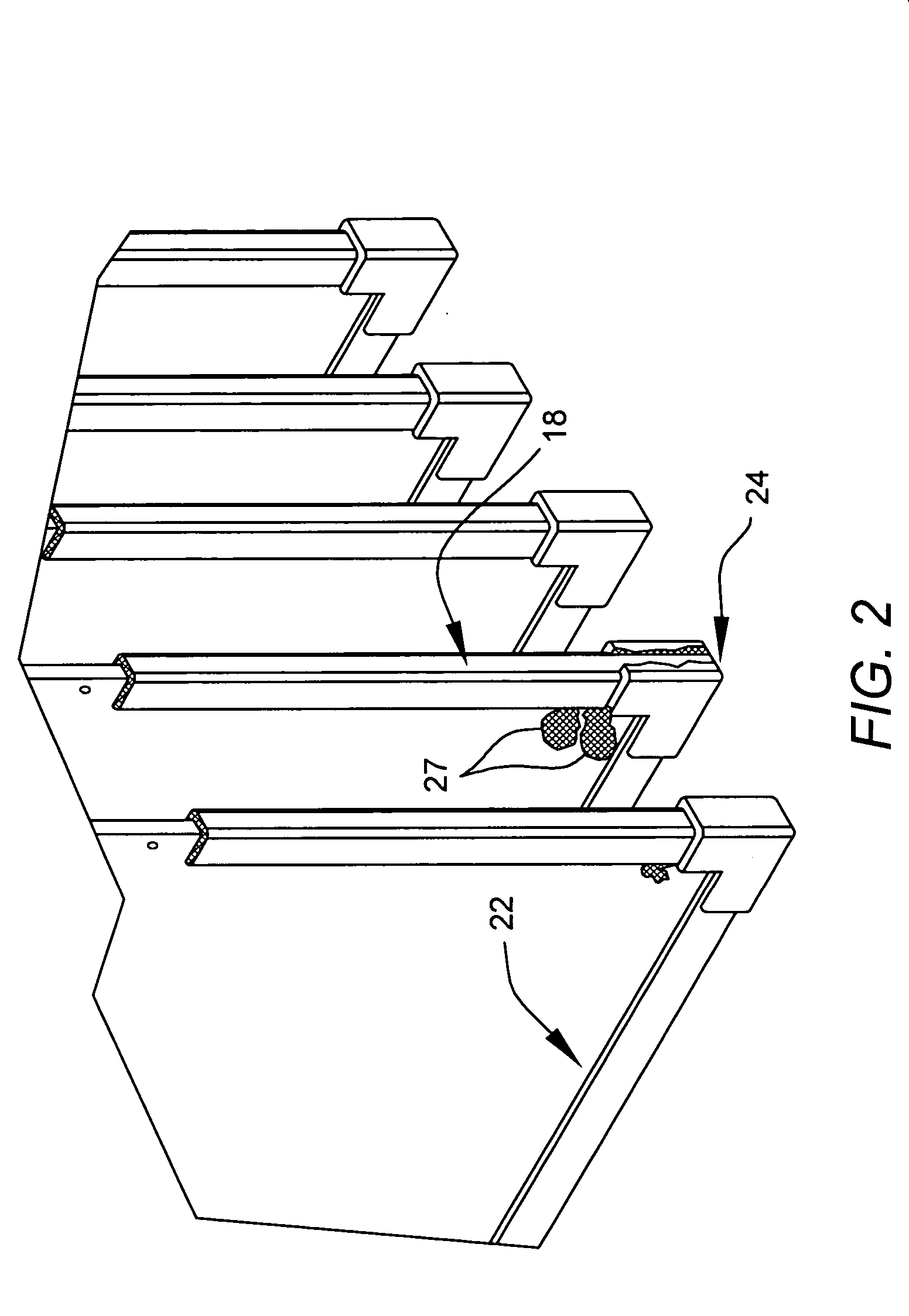Industrial protective systems
a protective system and metal electrode technology, applied in the field of metal electrodes, can solve the problems of difficult harvesting of metal growth damage to the outer surface of the edge strip, etc., and achieve the effect of strengthening the edge strip
- Summary
- Abstract
- Description
- Claims
- Application Information
AI Technical Summary
Benefits of technology
Problems solved by technology
Method used
Image
Examples
Embodiment Construction
[0027] Turning to FIG. 1 a prior art blank 10 is connected at its upper end with a support member 12 from which it is hung into a cell (not shown) of electrolyte solution in an electrolysis operation. Typically the blank 10 has glued along its two side edges 14 and 16 a pair of edge strips, one of which can be seen in FIG. 2 at 18.
[0028] Where a three-sided edge strip is employed, a further strip 22 similar to the strip 18 in FIG. 2 is glued along the bottom edge 20 of the blank 10. At corners of the blank 10 corner pieces 24 join the edge strips 18 and 22. In the prior art, as illustrated in FIGS. 1 and 2, all of the edge strips and corner pieces are secured to the blank 10 by an appropriate glue. Seen in FIG. 1, small apertures 26 along the edges of the strip help to secure the strips, both in the prior art and the practice of embodiments of the present invention. Two nodules 27 appear in FIG. 2, one at the intersection of the edge strip 18 and the corner piece 24 and one just ab...
PUM
| Property | Measurement | Unit |
|---|---|---|
| elongation % | aaaaa | aaaaa |
| width | aaaaa | aaaaa |
| elongation factor | aaaaa | aaaaa |
Abstract
Description
Claims
Application Information
 Login to View More
Login to View More - R&D
- Intellectual Property
- Life Sciences
- Materials
- Tech Scout
- Unparalleled Data Quality
- Higher Quality Content
- 60% Fewer Hallucinations
Browse by: Latest US Patents, China's latest patents, Technical Efficacy Thesaurus, Application Domain, Technology Topic, Popular Technical Reports.
© 2025 PatSnap. All rights reserved.Legal|Privacy policy|Modern Slavery Act Transparency Statement|Sitemap|About US| Contact US: help@patsnap.com



